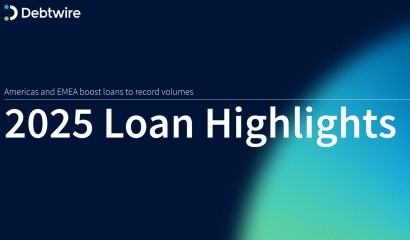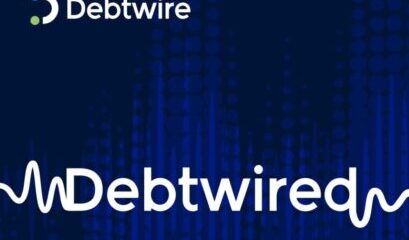Del Monte Guggenheim-led minority lender group’s post-bankruptcy attack on LME settlement payments – Legal Analysis
Del Monte Foods’ ad hoc group of minority secured lenders recently disclosed its holdings in a Rule 2019 Statement filed by its lead counsel, Dechert, and local counsel, Pashman, Stein, Walder, Hayden. The minority lender group has the potential to throw a wrench in the packaged food company’s proposed path in Chapter 11, which includes a stalking horse bid from a separate ad hoc term loan group led by Fidelity and Davidson Kempner. At Del Monte’s first day hearing, Allan Brilliant, co-chair of Dechert’s financial restructuring practice and counsel to the minority group, mentioned that the group may be considering whether approximately USD 105.8m in payments that Del Monte made to settle litigation over a liability management exercise (LME) could be recoverable as preferential transfers.
In this article, the Debtwire legal analyst team lays out the minority group’s holdings and discusses the LME transaction, ensuing litigation and ultimate settlement. We also explain that the lenders would not be permitted to bring a preference action to avoid the settlement payments without first obtaining Bankruptcy Court approval to do so by proving that a colorable preference claim exists and that Del Monte itself has unjustifiably refused to bring the action. To show that a colorable claim exists, the lenders would need to show, at a minimum, that there is merit to a claim that Del Monte was insolvent on 8 April. Even if the lenders were granted standing to pursue a preference claim on Del Monte’s behalf, they likely would be met with opposition from the lenders who received the settlement payments. As discussed below, those lenders could argue that the “earmarking doctrine” protects their payments from avoidance if the relevant loan agreement expressly provides that the loan was made to fund the settlement. The lenders also could assert an affirmative defense that the settlement payments were a contemporaneous exchange that conferred new value on Del Monte – i.e., that the dismissal of the litigation financially benefitted Del Monte.
Minority group holds first, second, and third out debt
Del Monte’s prepetition debt, which exceeded USD 1.2bn on its 1 July petition date, consisted of an ABL facility and three term loans – a first out, second out, and third out loan.
The seven-member minority group holds positions in each of the three term loans. Its largest position (39.7%) is in the third out term loan, its second largest position is in the second out term loan (15.5%), and its smallest position is in the first out term loan (8.7%).
Guggenheim Partners Investment Management holds the group’s largest positions in the first and second out loans. It holds 2.9% (USD 11m) of the first out loan and 5.1% (USD 23.7m) of the second out loan. CoBank leads the group in holdings of the third out loan with a 15.3% (USD 20.5m) investment.
By way of comparison, the super-senior ad hoc lender group, whose members are parties to a restructuring support agreement with the debtors, controls 66.5% (USD 181.7m) of the initial first out term loans, 88.1% (USD 107.4m) of the incremental first out term loans, 61% (USD 286m) of the second out term loans, and 4.6% (USD 6.2m) of the third out term loans.
LME transactions
In 2024, Del Monte engaged in a LME concerning its first lien credit and guaranty agreement, under which Del Monte Foods, Inc (DMFI) was the borrower of a seven-year USD 725m term loan (the 1L Term Loan). The loan was secured by substantially all assets of DMFI, whose obligations thereunder were guaranteed by certain of its 100% direct and indirect upstream owners – i.e., Del Monte Foods Holdings, Inc (DMFH), Del Monte Foods Holdings II, Inc (DMFHII), and Del Monte Foods Holdings Limited (Holdings, and together with DMFH and DMFHII, the Parent Guarantors).
Pursuant to the LME, Jefferies Capital Services, as fronting lender, and DMFI executed a commitment letter to provide USD 240m in new money loans to certain of DMFI’s and Holdings’ subsidiaries or affiliates through the provision of a new super-senior term loan facility by an ad hoc lender group whose members collectively held approximately USD 406.5m (57%) of the 1L Term Loan (the LME ad hoc group).[1] The extent to which any members of the LME group are also members of the super-senior ad hoc lender group is unclear.
The LME ad hoc group lenders agreed to backstop the new super-senior term loan facility pro rata to their holdings of 1L Term Loans, and the 1L Term Loan lenders who were not members of the ad hoc group could elect to participate in that new super-senior facility pro rata to their holdings of 1L Term Loans. The LME ad hoc group lenders could receive second out term loans in exchange for their 1L Term Loans, and non-ad hoc group lenders that participated in the new super-senior facility were offered a combination of second out term loans and third out term loans. Non-ad hoc group lenders that did not participate in the new super-senior facility could receive third out term loans.
The LME was further implemented as follows:
- On 2 July 2024, DM Escrow Corporation (a newly established subsidiary of DMFI), Jefferies, and Wilmington Savings Fund Society executed a loan and security agreement, pursuant to which Jefferies, as fronting lender, loaned DM Escrow Corporation USD 85m in initial escrow loans and USD 30m in additional escrow loans.
- Also in July 2024, three new direct or indirect subsidiaries of DMFI were formed: DM Intermediate; DM Intermediate II; and Del Monte Foods Corporation II (DFMC).
- The following month, DMFI transferred substantially all of its assets to DM Intermediate, which transferred those assets to DM Intermediate II, which transferred those same assets to DMFC. The asset transfers included substantially all of DMFI’s intellectual property and all of DMFI’s 100% ownership interest in the subsidiary guarantors.
- On 2 August 2024, DMFC executed a super-priority credit and guaranty agreement with lenders that were part of the ad hoc lender group. Under the agreement, the lenders provided USD 210m in new money to DMFC as new first out super-priority term loans due August 2028. On the same day, the parties entered into an agreement whereby a USD 12m FILO bridge loan plus certain premiums, were exchanged into first out super-priority term loans held by ad hoc lenders, and an USD 85m initial escrow loan, plus certain premiums, were also exchanged into first-out super-priority term loans held by the ad hoc lender group. The USD 30m additional escrow loan remained in escrow and was exchanged into first out super-priority term loans on or about 31 August 2024, totaling USD 240m in new money loans to DMFC.
- Also on 2 August, each of the ad hoc group lenders transferred their existing 1L Term Loans to DMFI in exchange for an equal principal amount of new second out term loans under the new credit agreement.
As for lenders who were not part of the ad hoc group, lenders then holding approximately USD 200.3m of the 1L Term Loans agreed to accept an exchange offer by the deadline provided. Non-ad hoc group lenders then holding approximately USD 105.8m of the 1L Term Loans (corresponding to approximately 35% by principal value of the non-ad hoc group lenders’ total holdings) declined to accept the offer.
LME backlash and litigation yield payout settlement for non-participating lenders
Unhappy with the LME, certain non-participating 1L Term Loan lenders took the position that “DMFI purported to transform – without their consent – the remaining 1L Term Loan lenders from first-lien lenders with substantially all of DMFI’s assets as collateral into holders of instruments secured only by the stock of DMFI, DM Intermediate, DMFH, and DMFHII, standing in line behind approximately $1.2 billion of debt secured by assets that once had secured their loans.” The remaining lenders argued that they been “transformed from lenders holding equal liens with all of the 1L Term Loan lenders to structurally subordinate lenders who have essentially no collateral securing the obligations owed to them.” The following diagram depicts the transaction.
Source: Verified Third Amended Complaint
On 27 August 2024, certain lenders that had not exchanged their 1L Term Loan debt (such lenders are not identified in court documents) purported to act as the requisite lenders and notified DMFI and Goldman Sachs, as administrative agent, that they were replacing Goldman Sachs with Black Diamond Commercial Finance. DMFI responded that it did not consent to the replacement and reserved all rights. Matters only escalated from there. Black Diamond then purported to remove and replace all directors on the boards of DMFI, DMFH, and DMFHII. Black Diamond also notified DMFI of various alleged defaults under the credit agreement governing the 1L Term Loan. Certain of the non-participating lenders also argued that the LME breached the credit agreement. Litigation ensued in the Delaware Chancery Court on 9 October 2024, with Black Diamond seeking a declaration that its replacement of the board members was valid.
DMFI, DMFH, DMFHII and the ousted board members contested the relief sought by Black Diamond, arguing that the non-participating lenders “never tried to invalidate or unwind the transactions. Nor have they attempted to accelerate payment of the debt. To the contrary, these litigating lenders keep collecting regular interest and principal payments, and otherwise reaping the benefits of the very transactions they are contesting. What they appear to want is whatever holdup value and leverage that control of three boards of directors might give them.”[2] The parties ultimately negotiated a consensual settlement of the Chancery Court action that resulted in its dismissal with prejudice. Under the settlement, the amounts held by non-participating lenders under the 1L Term Loan were to have been retired. According to Jonathan Goulding, Chief Restructuring Officer of the Chapter 11 debtors, the settlement payment was made on 8 April 2025.
Standing to pursue a preference action
Seemingly unhappy with the settlement and hoping to bring those funds back into Del Monte’s estate, the ad hoc minority group’s counsel referenced a potential preference action at the debtors’ first day bankruptcy hearing. Causes of action to recover preferential transfers in Chapter 11 cases are property of a debtor’s estate, and thus only may be brought by the debtor or a Chapter 11 trustee, if appointed. Creditors, such as the members of the ad hoc group represented by Dechert, lack standing to bring those causes of action on a debtor’s behalf but a Bankruptcy Court can grant them permission to do so. Regardless of who brings the action, recovery of funds through a preferential transfer action must benefit the debtor’s estate, rather than an individual creditor.
A bankruptcy court in New Jersey, where Del Monte’s Chapter 11 cases are pending, will not grant derivative standing to a creditor to pursue an action on behalf of a debtor’s estate unless (i) the party seeking standing has made a demand on the debtor to bring the action, (ii) the debtor declined the request, (iii) the party seeking standing has shown that a colorable claim that would benefit the estate exists, based on a cost-benefit analysis performed by the court, and (iv) the debtor’s refusal to bring the action is an abuse of discretion (i.e., unjustified) in light of its duties in a Chapter 11 case.
Obtaining standing in and of itself is often an uphill battle. To do so, the minority ad hoc group would need to show that there is a colorable preference claim to recover the settlement payments, and that the debtors’ refusal to bring that preference action is unjustified. Although the settlement was entered into before the bankruptcy cases were commenced, we note that as a general rule, bankruptcy courts often take into consideration the strong public policy favoring settlement agreements, and therefore any decision by Del Monte not to seek to unwind that settlement by recovering the payments arguably would be granted some degree of deference by the Bankruptcy Court.
Preference action vulnerabilities
With respect to showing a colorable claim that a preference action exists, section 547 of the Bankruptcy Code authorizes a debtor to avoid a transfer made to a creditor on account of an existing debt that was made (i) while the debtor was insolvent and (ii) within 90 days before the date of the bankruptcy filing, if the transfer enabled the applicable creditor to receive more than such creditor would have received if the case had been filed under Chapter 7 and the transfer had not been made.
If the party seeking to avoid a payment as a preferential transfer proves each of these elements, the burden then shifts to the payment recipient to prove, by a preponderance of evidence, that the payment is excepted from the preference rule, either by a safe harbor provision or an affirmative defense.
Thus, the ad hoc minority group, to obtain standing, must show that it has a colorable claim with respect to each of these elements. As the payment was made within the 90-day lookback period and on account of an existing debt (i.e., the settlement agreement that contractually bound it to make the payment), the most significant burden would be to prove that Del Monte was insolvent on 8 April – when the settlement payment was made. Pursuant to Bankruptcy Code section 547(f), a debtor is presumed to have been insolvent during the 90 day look-back period. Bankruptcy courts in New Jersey have held that to rebut this presumption, a party must provide “non-speculative evidence that is sufficient to permit a court to conclude that the debtor was indeed solvent at the time of the transfer.”[3]
Aside from the question of solvency, the recipients of the settlement payments could invoke the “earmarking doctrine” to argue that the elements of a preference action have not been met – i.e., that there was no transfer of the debtors’ property – if the facts would support that argument. Under this doctrine, if a third party lends a debtor money for the specific purpose of paying a particular creditor, the loan proceeds are considered to be “earmarked” for that creditor – never intended for any other use by the debtor – and the transfer of those funds from the debtor to that particular creditor consequently cannot be avoided as a preference. These situations are viewed as a substitution of a new creditor for the former one.
In the Third Circuit where Del Monte’s Chapter 11 cases are pending, a US Court of Appeals for the Third Circuit held that the earmarking doctrine is inapplicable unless there is a requirement in the new lender’s agreement conditioning the loan on payment to the creditor who received the alleged preference payment.[4] In other words, the Court concluded that in order for the earmarking doctrine to apply, there must be evidence of an agreement between the new creditor and the debtor that the loan proceeds would be used to pay a specified debt. The Court explained that it is not enough to show that the new creditor knew of the intended use of the funds; the new creditor must actually require that the funds would be so used. That Court ultimately ruled that three requirements must be met in order for the “earmarking doctrine” to protect payments from avoidance as preferential transfers: (i) there must be an agreement between the new lender and debtor that funds will be used to pay a specific antecedent debt; (ii) the agreement must be performed according to its terms; and (iii) the transaction, viewed as whole, must not result in any diminution of debtor’s estate.
The lenders who provided the new term loan under the LME discussed above also provided a “Settlement Loan” to fund the settlement payments. Del Monte Pacific Limited (DPML) announced on 5 May that DMPL’s Board of Directors decided not to provide any monetary contribution to DMFHL’s new term loan lenders to settle the Chancery Court litigation. The agreement relating to the Settlement Loan, according to DPML, required that DPML contribute up to USD 45m by 5 May 2025, failing which the new term loan lenders would have the right to appoint a majority of directors on the boards of DMFHL and its subsidiaries, and up to 25% of DMPL’s equity in DMFHL would be allocated to partially cover the Settlement Loan. As such, the recipients of the settlement payments could argue that under the earmarking doctrine, the Settlement Loan proceeds were not property of the debtors because the funds were intended by the lenders and Del Monte to be used to make the settlement payments. However, unless the Settlement Loan contained language stating that the proceeds were to be used for the singular purpose of making the settlement payments, and the proceeds were used in accordance with the terms of the Settlement Loan, that argument would fail based on legal precedent binding on the New Jersey Bankruptcy Court.
In terms of affirmative defenses, the non-participating 1L Term Loan lenders who received the settlement payments could look to defend against any preference action brought by arguing that the settlement payments constituted a contemporaneous exchange for new value. To succeed with this defense, the recipients of the settlement payments must show that: (i) they provided new value to Del Monte; (ii) the recipients and Del Monte intended the payments to be a contemporaneous exchange; and (iii) the exchanges were in fact contemporaneous. Section 547(a)(2) of the Bankruptcy Code defines “new value” as “money or money’s worth in goods, services, or new credit . . . that is neither void nor voidable by the debtor . . . under any applicable law, including proceeds of such property, but does not include an obligation substituted for an existing obligation.” For this defense to apply, bankruptcy courts in New Jersey have found that the recipient must show that the debtor’s estate was materially augmented by the transfer post-petition.[5] As such, we would expect that the success of any such defense would turn on the extent to which the recipients of the settlement payments could show that the resolution of the Chancery Court litigation benefited Del Monte. Given that the litigation had proceeded up to the trial phase, the litigation costs saved would be limited to that extent, although the parties would necessarily need to factor in any costs associated with any potential appeal. The parties also would need to quantify costs saved as a result of disputes concerning the propriety of the replacement of the board members discussed above, including with respect to disruption of business stemming from that litigation. The incurrence of the Settlement Loan also would weigh into this analysis.
In sum, the only significant burden for the party seeking to avoid the settlement payments would be to show that Del Monte was insolvent on 8 April, and there is a presumption of insolvency during that time. If the party seeking to avoid the payments as preferential transfers were to succeed on this front, the parties defending against the preference litigation would bear the burden of proving the application of the earmarking doctrine and the “contemporaneous exchange for new value” defense. The former would largely turn on the language of the Settlement Loan, while the latter would turn on the factors discussed above, which are questions of fact that would need to be gleaned through discovery and set forth at a trial. These factors would play into the Bankruptcy Court’s determination as to whether to grant standing to the ad hoc minority lender group to pursue the action on Del Monte’s behalf in the event that Del Monte were to refuse to bring the action. Moreover, Del Monte’s refusal could be viewed as justifiable in light of the costs associated with bringing the preference action, and the potential consequences of recovering the settlement payments, which arguably could give rise to an argument by the recipients of the settlement payment that Del Monte effectively breached the settlement agreement. As such, the issue of standing would be a complex one that would require the Bankruptcy Court to consider a myriad of factual and equitable factors.
Related Links:
Rule 2019 Statement
Verified Third Amended Complaint
Pretrial Stipulation
Defendants Pretrial Brief
DPML Announcement
Restructuring Profile
Case Profile
Debtwire Dockets: Del Monte Foods Corporation II Inc
Prior to joining Debtwire, Sara was a law clerk to two judges in the United States Bankruptcy Court, S.D.N.Y. and practiced in the Financial Restructuring Group at Clifford Chance, where she represented financial institutions (as secured and unsecured creditors, defendants in adversary proceedings, and participants in DIP financings) in high-profile restructurings. She also represented foreign representatives in Chapter 15 cross-border cases.
This article should not be relied upon to make investment decisions. Furthermore, this article is not intended and should not be construed as legal advice. ION Analytics does not provide any legal advice, and clients should consult with their own legal counsel for matters requiring legal advice. All information is sourced from either the public domain, ION Analytics data or intelligence, and ION Analytics cannot and does not verify or guarantee the adequacy, accuracy or completeness of any source document. No representation is made that it is current, complete or accurate. The information herein is not intended to be used as a basis for investing and does not constitute an offer to buy or sell any securities or investment strategy. The information herein is for informational purposes only and ION Analytics accepts no liability whatsoever for any direct or consequential loss arising from any use of the information contained herein.
———-
[1] The LME transaction included the following:
- “Step 1” involved a USD 125m bridge loan funded as a first-in last-out (FILO) term loan facility under an amendment to the ABL credit agreement, and USD 85m and USD 30m in escrow loans to a newly formed special purpose vehicle that would be an unrestricted subsidiary (UnSub);
- a “Step 2” in which the USD 125m Step 1 FILO loan and the USD 85m Step 1 escrow loan would be exchanged into indebtedness incurred by a new UnSub, followed by the further exchange of the USD 30m Step 1 escrow loan if Del Monte Pacific Limited (DMPL), the ultimate parent of DMFI and the Parent Guarantors failed to loan or invest USD 30m to the new UnSub by 31 August 2024;
- the creation of a “Restricted NewCo” subsidiary and an “Unrestricted NewCo” subsidiary;
- DMFI’s investment of substantially all its assets into the “Restricted NewCo,” and then “Restricted NewCo’s” investment of those same assets into “Unrestricted NewCo”
- the replacement of the ABL credit agreement with a new ABL facility at “Unrestricted NewCo;” and
- a new super-senior term loan facility at “Unrestricted NewCo.”
[2] Defendants’ and Nominal Defendants’ Pretrial Brief, at p. 3.
[3] See In re Showtime Enter’s, Adv. Proc. No. Adversary No. 06–2552 (Bankr. D.N.J. 2007).
[4] See Schubert v. Lucent Techs (In re Winstar Commc’ns), 554 F.3d 382 (3d Cir. 2009).
[5] See In re John A. Rocco Co., Adv. Proc. No. 12–12690 (Bankr. D.N.J. 2013).















